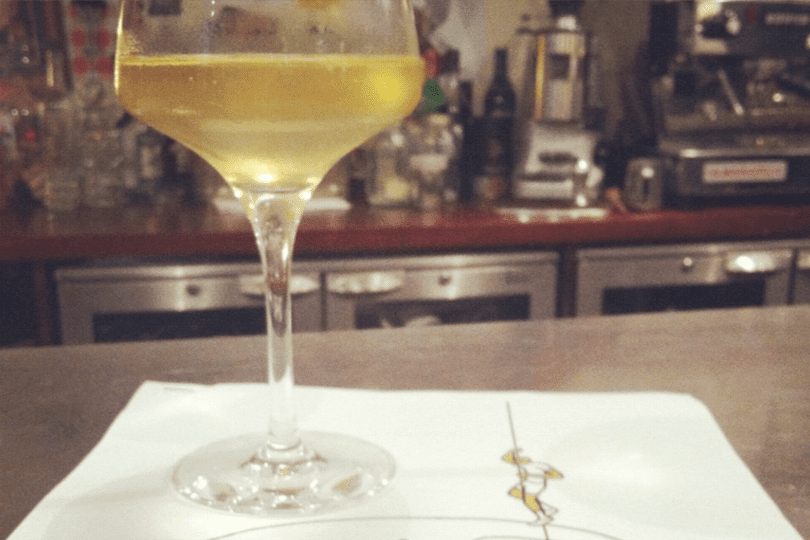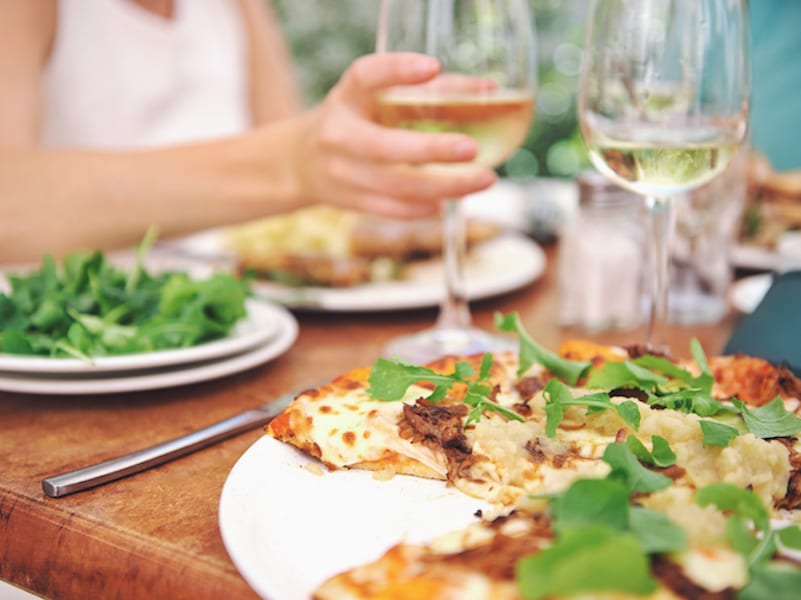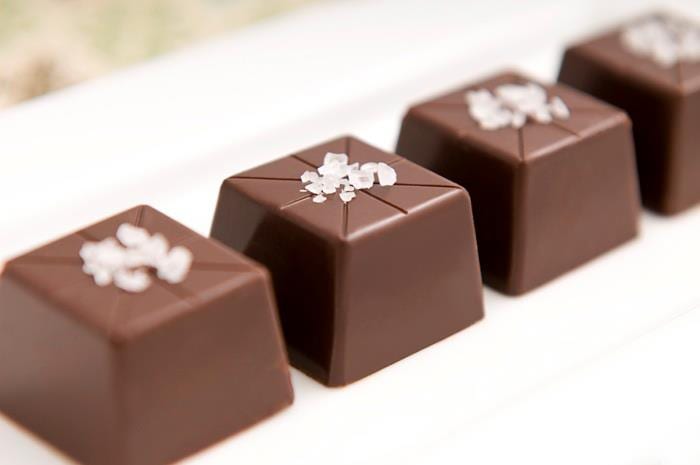Native to the Finger Lakes wine region of upstate New…
Weekend Reads brings you longform features from Honest Cooking’s first iPad Magazine, which you can download for FREE here.
By Christina Pickard
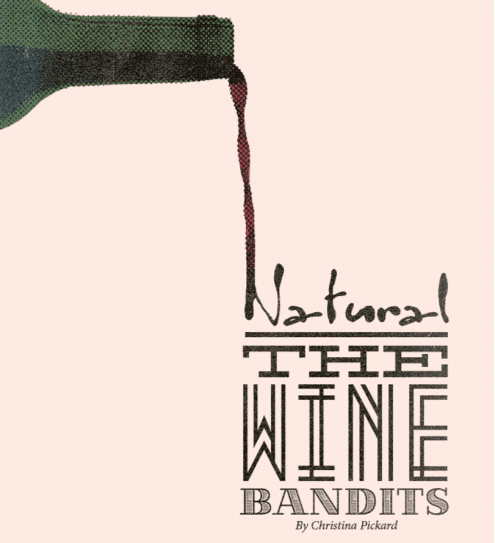
Beneath the roof of a crumbling stone winery in the tiny French town of Martigné-Briand, I perch precariously on the lip of an old barrel. In one hand I grasp the wooden handle of an axe; in the other a bottle of bubbly. A ponytailed bear of a Frenchman grins at me through his bushy beard. ‘Sabre,’ he says, waggling his finger between the bottle and the axe. His equally ponytailed accordion-playing son and his multi-pierced girlfriend egg me on in indecipherable French.
And although the room is spinning a little thanks to an evening of merrymaking, I grip the base of the bottle tighter and swing the axe along it in an upward motion. The cork, along with half of the bottleneck, goes flying into the darkness. I squeal and give myself a few girly claps, overjoyed at my sabering success. But I don’t have much time to gloat, for in the hands of the ponytailed son is now no longer an accordion, but an axe three times the size of mine. With one fell swoop, the cork comes rushing out of his bottle, and the liquid inside goes straight down his gullet. At this moment, although my brain feels as though it has been subjected to a bout of sabering, I take note of the evening’s events, spent in the company of the bear-man whose name is Olivier Cousin, and who happens to be one of the most celebrated natural winemakers in France’s Loire Valley. Before the axe incident, there was a midnight (or was it 1am?) horse ride through the town to the cellars, accompanied by more accordion playing, a cellar dog, and a small group of Olivier’s family members. Although I didn’t know it at the time, there would be more horse riding the next day–a gallop through the vineyards, the land those same horses normally plough. The following week, in the Roussillon, in southwest France, horses would come into play again. This time I’m given the rather reckless responsibility of steering both horse and plough through narrow rows of vines. When I come absurdly close to ripping up a 110-year-old vine I decide I’m better off watching from the sidelines.
These kinds of shenanigans, horse-related or not, are fairly typical when a trip to visit a natural winemaker is in the cards. A far cry from the suited and booted clean-shaven export managers who greet you at the golden gates of many a marble-floored winery, natural winemakers are their tattooed, pierced cousins, the vagabonds of the wine industry, usually scruffy, with dirt on their jeans and under their nails; sometimes sporting colourful shirts, and impressive facial hair, sometimes not. They are the “larrikins and ratbags, the old and the young, the newbies and nerds putting the soul back into wine,” celebrated Aussie wine journalist Max Allen once enthused. They are the colorful characters making wine in a way that is turning the industry on its head.
Let’s rewind. What is natural wine? Isn’t all wine just fermented grape juice and therefore natural?
No, unfortunately it isn’t. And therein lies one of the biggest marketing ploys of the drinks industry. Such is the commercial world we live in, the big brands, with equally big marketing budgets, are the ones who get seen on a large scale. When it comes to wine it means these brands drip-feed us images of sun-kissed people handpicking grapes, trodding them by foot, and then leaving them in barrels to miraculously spring forth into wine. Ironically, it’s often these same brands that are the biggest culprits of highly manipulated wine, with Frankenstein-like lists of additives and high-tech procedures being implemented into their “wine-like beverages”.
Natural winemaking is a reaction to this, a rebellion of sorts, a “return to the land” and to a time before chemicals.
Natural winemakers work their vineyards organically. Many of them take this further and work biodynamically, which follows the principle of not only removing chemicals, but of adding health to the vineyards by creating biodiversity within their unique ecosystem with things like cover crops, compost, and homeopathic-like “preparations”. Biodynamics also has a spiritual side related to the energies of the vines in connection with the cycles of the moon, which can, understandably, be a bit controversial. However, despite some of its seemingly “out there” beliefs, biodynamics is being practiced around the globe by some of the world’s top winemakers, and its popularity is growing. From my experience, the healthiest happiest vineyards I’ve seen have been farmed biodynamically.
Natural winemakers take things one step further and keep their hands off in the winery as well, for a producer working organically can still add all sorts of chemicals when it comes to the making of the wine.
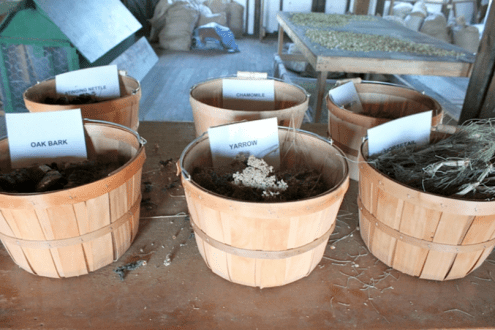
In this age of technology, winemakers can choose from a list of legal additives the size of a small book. Like hamburgers at a drive through, they can order chocolate and coffee flavors into their wine by choosing the “toast” level of their barrels. They can choose which industrial yeast will give their Sauvignon Blanc the most peach and pineapple aromas. If their tannins are too soft, they add chemical ones. Same goes for acidity (they can also take it away if the wine is too sharp). They can add a myriad enzymes, gum arabic for texture and sweetness, oak chips, something called Mega Purple or Ultra Red for color and plumpness, isinglass (from fish bladders) for fining, egg whites for clarification, etc etc. If well funded they can buy expensive glistening machines that do sci-fi sounding things like cryoextraction and mircooxigination (to soften and add color), sterile filtering to kill all populations of bacteria (not to mention flavor), spinning cones and reverse osmosis to reduce alcohol…and the list goes on and on and on.
Then there is the hotly contended issue of sulfur. Sulfur Dioxide can be used both during fermentation and before bottling as an antioxidant, antibacterial, and stabilizer. Natural winemakers prefer to use little or no sulfur (although it occurs in small amounts naturally in the wine, hence why very few wines are ever totally sulfur-free). Some believe sulfur is necessary to winemaking, others have managed without it. The key is not to use too much (it becomes detectable as a rotten egg, nostril-burning sensation in young wines, and although not proven, is one of the elements suspected of contributing to morning headaches). Although sulfur is a big issue for natural winemakers, it is often blown out of proportion in the blogosphere. I’ve found the bigger issue is industrial yeast used to give unnatural flavors to wine—there is no doubt, natural wines must use native yeast—found naturally on the grape and its environment.
Go to a large commercial winery and you’ll hear none of this. They prefer you to think about all that foot-trodding and sun-ripening loveliness. Talk of cryoextraction and Mega Purple doesn’t sound quite as romantic.
The problem is, unlike food, they’re not talking about it on their labels either. In fact, wine is one of the only edible substances in which ingredients are not required to be listed on the label (with the exception of the very vague ‘contains sulfites’). In the USA listing ingredients in wine was actually prohibited until recently as it was deemed unnecessary information for the consumer.
And so most consumers remain in the shadows, and the myth of wine as a pure and unadulterated beverage persists.
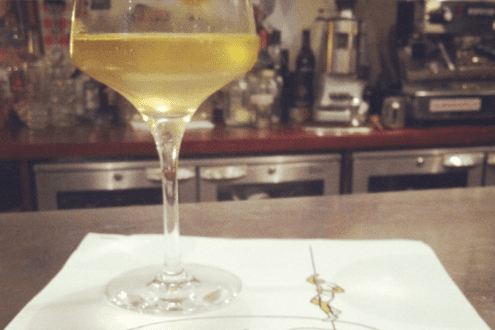
The good news is, things are changing. These changes are still slow to reach the vast majority of consumers and that’s because natural wines are still made in small quantities. Like with organic food, which took awhile to catch on, these wines have yet to reach the demand levels in which they’ll be usurped by big-gun corporations. But within the wine world, the number of winemakers going au naturel is growing at a rapid rate. Italy, which less than a decade ago had virtually no (declared) natural winemakers, now boasts over 100, the second largest contingency after France.
Natural wine bars and restaurants are cropping up around the world. Paris has 160 of them. They’re thriving in Scandinavia, Britain, and America. The Japanese, more sensitive to sulfites, have long been natural wine drinkers. In the past few years, natural wines have been taking center stage in Top 100 lists, and filling the pages of many a wine publication. They are one of the most talked about topics in the wine blogosphere, causing more heated debates than any other category. Despite occupying a tiny slice of the market’s pie, natural wines are making an inordinate amount of noise.
“[Natural wines] are people-driven, not market,” says prominent American wine author Alice Feiring. “The winemakers are growing, the drinkers are growing, hell, I can’t get the wines I want anymore. The competition is cut throat and if I don’t act quick, the stores run out of them.”
So what do they taste like? Stylistically, natural wines can be as diverse as conventionally made ones and range from being more ‘normal’ in flavor profile to completely wild and unusual, with a focus on expressing the terroirs (the environment in which the grapes were grown) and not on ripe fruit and oak.
To the uninitiated, the wildest of the wines can be too far from what they’re used to, with complex flavors of minerals, earth, salt, and sometimes a whiff of a barnyard. Many of the white wines have oxidative qualities that give the wines nutty, spicy, apply qualities reminiscent of cider, a characteristic either loved or loathed. A good deal of natural wines are made to be drunk young and fresh, but some can age for years. A lot of natural winemakers are champions of obscure grape varieties, rescuing them from near extinction. For me, the best wines are pure and lithe, and true to their grape varieties with a strong sense of place. I take a sip and think, “this could come from nowhere else except [insert wine region]”. In an age of winemaking homogeneity, where all too many wines taste the same, they’re a breath of fresh air. Most importantly though, the best natural wines are so darn delicious you could down the bottle with frightening speed.
However, unlike organics and biodynamics, there is no official regulating body for natural wines and therefore no hard-and-fast set of rules; this being something that divides the wine world, with some believing that a set of guidelines would aid in transparency for the consumer, and others believing that the intentions of natural winemakers would be diluted by the confines of beauracracy (as it has for organics) and therefore contradict the grassroots spirit of natural wine.
Perhaps I’m a hippy at heart, but I’m not so bothered by the semantics. I think of natural winemaking as a mindset, a way of looking at the environment and the effect we humans have on it. It’s a decision taken by winemakers to respect the land they’ve been given and, in the process, to make the most honest, tasty wine they can with the least amount of manipulation. There will always be those who jump on the bandwagon motivated by money and trends, but most choose to work naturally because it’s the kind of wine they like to drink. And because they believe it’s right. These are the winemakers whose stories deserve to be told.
People like Fredi “Fresquito” (aka “The Fresh One”) Torres who spent most of the 1990s touring Europe as a techno and house DJ and who now makes some stunningly beautiful wine under the label Sao del Coster in Priorat, northeast Spain. In a region where many a superstar wine is made to suit the powerful critic Robert Parker’s palate, Fredi marches to his own beat, farming his tiny 6 hectares biodynamically with his mule Ruby and donkey Morena. His flagship ‘Terram’ wine, a blend of Cariñena, Garnacha, Cabernet Sauvignon, and Syrah, manages an unusual freshness in Spain’s heat while also being rich, chocolaty and savoury. I’m told it can age for 20 years, but I wouldn’t know. A bottle never lasts longer than an hour in my house. Fredi is a gregarious charmer. Once, in response to an email I wrote him querying whether he remembered me and if he’d let me interview him, wrote, “Of course I remember this elegant and smiling little flower. But I have a question: are you sure I am the right guy? You know I am crazy and I speak English like a Spanish cow…”
In contrast to Fredi’s relatively new winery, 31-year-old Luca Roagna is the fifth generation winemaker at his family’s estate, situated in the region of Barbaresco in northwest Italy’s Piedmont. The Roagna family has been making wine here for 150 years. Their website proudly states that they have changed very little in that time, and for good reason. They’ve been making gorgeously complex, unmistakably Italian wine with a hands-off approach long before the introduction of chemicals. Their focus is and always has been on expressing their terroir and native grape variety (Nebbiolo) as honestly as possibly. The results are wines that exist on a higher plane than most, even in the extremely well reputed regions of Barbaresco and Barolo. Luca learned to make wine from his father who learned from his father. Together the two Roagnas run the wildly successful cantina, and are in the enviable position of selling more wine than they can make. But you wouldn’t know it to meet Luca: energetic and cheeky grinned with an infectious laugh, Luca prefers to drink his wine rather than talk about it. And he’s as talented a drinker as he is winemaker. Despite his 5 foot 5 (or so) stature, he can drink me under the table.
But it’s not just Europe that houses the world’s natural winemakers. You’ll find them lurking in the shadows of practically all “New World” countries, particularly in Australia and the United States. But not so in South Africa, where 30-year-old Craig Hawkins is the only natural winemaker in the entire country. After travelling the world and training with a whole slew of winemaking greats, he resettled in his native land, an area north of Stellenbosch called Swartland. Blessed with dry heat and old deep-rooted vines (which produce less but more interesting grapes), Swartland is blessed with a soil and climate similar to that of the Roussillon in southwest France. Gentle and soft-spoken, you would never guess this young, sweet winemaker was the lone wolf rocking South Africa’s wine scene, making wines as unlike his compatriots as to give the authorities cause to resist permission for export, on the grounds that Craig’s weren’t representative of South African wines. Ironically, his wines capture the terroir of Swartland like no other. It’s a conundrum that has been the case for other natural winemakers around the world as well.
Whilst Craig is the head winemaker at the organic 56 hectare winery Lammershoek, it’s Testalonga, his own label, which is his baby. Made from old vine Chenin Blanc, his wines have little or no added sulfur. He employs techniques like foot-pressing, lees (yeast) contact for added texture and complexity, and extended skin maceration (leaving the skins in contact with the fermenting juice like a red wine), in an ‘orange wine’ style made famous in the region of Friuli in Italy and the Jura in France. Craig pushes the boundaries of winemaking, constantly experimenting and trying new things. His complex wines have elicited lists of positive descriptors from the biggest wine critics, who celebrate their mouth-watering acidity paired with rich texture, minerality, and layers of fruits and spices. I just say they’re delicious.
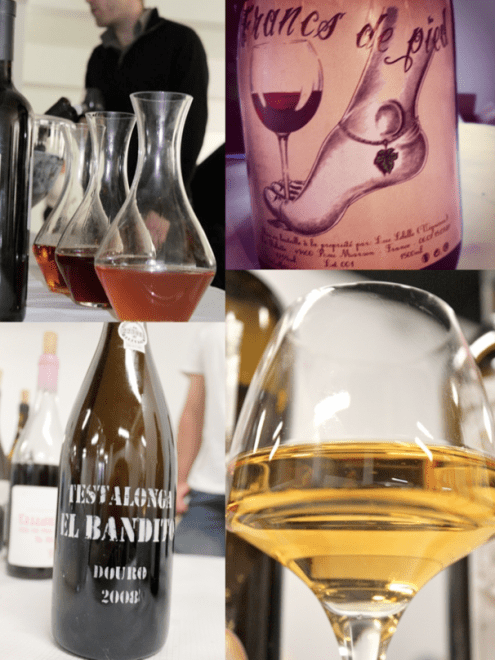
There are winemakers like Olivier, Fredi, Luca and Craig across the globe, free spirited, quirky, and passionate people with stories more intriguing than anything found in the glossy marketing material of big budget wineries. They are breathing life into an all-too-stuffy industry. You won’t find their wines in supermarkets or discussed over cigars in leather armchairs. Natural wines—and natural winemakers– require a little time and an open mind. But if you are willing to seek them out, they will seduce you.
As I write this, natural wines are still something of a badly kept secret, adored by some, but unknown to most. And so I find myself in a bit of a pickle. On the one hand, I want to shout about them to the world. I want them to be more accessible on a large scale so they can be enjoyed by all, therefore encouraging more and more winemakers to sit up and take notice and start working with the same consideration. On the other hand, there is a danger that with such increased demand, the term “natural” with get appropriated and adulterated–another cog in a money-making machine–and the truly artisanal winemakers, the cheeky grinned foot-stomping horse-ploughing saberers, will get swallowed up in the process.
So drink their wines while you can. For now anyway, the spirit of natural wines is still pure. And this is a rare thing these days.
This piece was originally featured in Honest Cooking’s first iPad Magazine. Download the magazine for FREE here.
Native to the Finger Lakes wine region of upstate New York, Christina Pickard spent 11 years in London working as a wine presenter and educator for television/media/events, and a writer for publications including Decanter, Imbibe, and Harpers Wine & Spirit. In January 2013 she left the UK for sunnier shores and now resides in Perth, Australia where she writes the wine section for Scoop Magazine, Western Australia's largest consumer glossy. She also contributes to Gourmet Traveller Wine and continues to write f0r UK and US publications. Christina holds certificates of merit and distinction from the Intermediate and Advanced Wine and Spirits Educational Trust.

